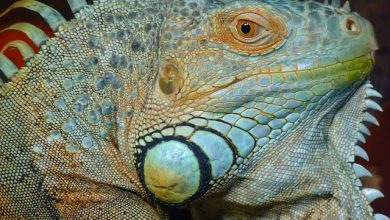Gardening with Exotic Pets: What to Plant

Last week I covered which plants itâs best to keep out of reptile and amphibian enclosures because of toxicity that can lead to health problems in your herp. This week, Iâm going to offer suggestions for what to plant instead.
Hereâs a list of safe plants you can add to a bioactive enclosure.
Aloe
Aloe is known to be soothing for skin, and you can also find it now as an ingredient in juices or just sold to eat. Turns out itâs also safe for exotic pets.
As a bonus, aloe plants are among the easiest to grow indoors, too. That makes them a great choice for bioactive terrariums.
Cactus
I know cacti are often thought of as weaponized plants, but several varieties are actually safe to keep in your petâs bioactive enclosure. You want to look for cactus varieties that donât have sharp spines, such as Easter cactus and Christmas cactus.
In fact, if you keep tortoises, cactus is a plant they love to eat. Look for varieties with flat leaves.
Snake plant
Iâve suggested snake plants for indoor gardeners on this blog before. Theyâre fairly easy to care for and have interesting-looking leaves. Plus, theyâre safe for reptiles and amphibians.
The main thing to consider when going with snake plants is that they grow vertical and can get quite tall. You can trim them to keep them shorter.
Hens and chicks (echeveria)
These are small, easy-to-care for succulents that come in many varieties. You can plant several of different shapes, sizes, and colors.
Living stones (lithops)
These are neat plants that, like manyother succulents, are easy to take care of. They only need to be watered once every two or three weeks, making them a good choice for exotic pets that need a drier environment.
They grow close to the soil and look like rocks, and they also come in a variety of colors, including shades of red, yellow, orange, green, blue, and purple.
Certain grasses
I mentioned in the previous article on toxic plants that some grasses, such as Johnson grass, are unsafe for animals. Others, however, are fine. Grassland tortoise species, such as Russian and Greek tortoises, in fact, love to feed on grass.
You can safely plant sedge grass, barley grass, oat grass, wheat grass, rye grass, fescue, fountain grass, millet, and timothy grass.
Air plants
Air plants are a perfect option for vertical tanks because they donât need to be grown directly in substrate. That means you can use them to decorate branches and backgrounds in tanks, as well.
They will rot if overwatered, so thatâs something to keep in mind as you decide whether theyâll work with your animal.
When considering a plant for an exotic pet enclosure, I recommend selecting plants that are native to the same climate zone as your reptile or amphibian. So, cacti make a good choice for desert species, and snake plants are a good choice for tropical species.



